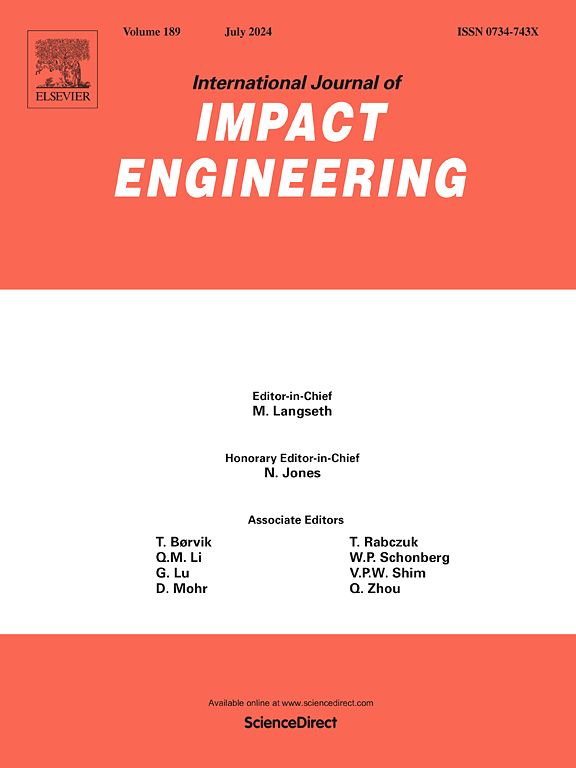考虑相变的超高速碰撞等离子体(HVIGP)估计理论模型
IF 5.1
2区 工程技术
Q1 ENGINEERING, MECHANICAL
International Journal of Impact Engineering
Pub Date : 2025-04-11
DOI:10.1016/j.ijimpeng.2025.105341
引用次数: 0
摘要
超高速尘埃撞击产生等离子体的模拟一直基于实验拟合,忽略了撞击行为过程,导致在速度超出拟合范围时使用的缺点。本文在改进冲击等离子体生成模拟模型的基础上,建立了从冲击行为理论到等离子体扩散的前向模拟范式。通过使用高阶波速与材料速度的关系,以及相变状态方程,该研究模型建立了一个精细模拟扩展到 1000 GPa 的冲击条件,并实现了从冲击行为到冲击电离过程的一致描述。该模型与实验结果的对应关系良好,与实验结果的大小和指数增长模式十分接近。本文章由计算机程序翻译,如有差异,请以英文原文为准。
A theoretical model for estimating hypervelocity impact generated plasma (HVIGP) considering phase transitions
Simulation of hypervelocity dust impact generated plasma has been based on experimental fitting, ignoring the impact behavior process, resulting in a disadvantage using at velocity beyond fitting range. Aming on improve simulation model of the impact plasma generation, this article establishes a forward simulation paradigm from the theory of impact behavior to plasma diffusion. By using the higher-order wave velocity and material velocity relationship, as well as the phase transition equation of state, the research model establish a fine simulation extend impact condition upto 1000 GPa, and achieves a consistent description of the impact behavior to the impact ionization process. The model demonstrates a promising correspondence with experimental results, as in close proximity to the magnitude and comparable exponential growth patterns.
求助全文
通过发布文献求助,成功后即可免费获取论文全文。
去求助
来源期刊

International Journal of Impact Engineering
工程技术-工程:机械
CiteScore
8.70
自引率
13.70%
发文量
241
审稿时长
52 days
期刊介绍:
The International Journal of Impact Engineering, established in 1983 publishes original research findings related to the response of structures, components and materials subjected to impact, blast and high-rate loading. Areas relevant to the journal encompass the following general topics and those associated with them:
-Behaviour and failure of structures and materials under impact and blast loading
-Systems for protection and absorption of impact and blast loading
-Terminal ballistics
-Dynamic behaviour and failure of materials including plasticity and fracture
-Stress waves
-Structural crashworthiness
-High-rate mechanical and forming processes
-Impact, blast and high-rate loading/measurement techniques and their applications
 求助内容:
求助内容: 应助结果提醒方式:
应助结果提醒方式:


